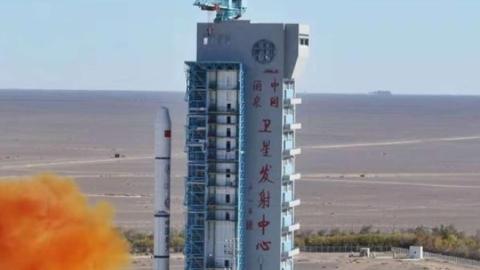Space is no longer the final frontier, but the most vulnerable frontier. As critical infrastructure around the world becomes increasingly reliant on space-based technology, the growing threat posed by China’s space operations has come into focus for the US and its allies.
This week, Lt. Gen. H.R. McMaster , Hudson's Japan Chair, convened a panel of government officials and experts to examine how US alliances with Japan, India, and other Indo-Pacific partners can shape a future where space operations are defined by freedom of access, agreed-upon governance, and shared values. Catch the highlights of this important discussion below.
Key takeaways on how the US and its Indo-Pacific allies can lead the effort to secure space:
Why alliances matter, according to Mir Sadat, director, Defense U.S. National Security Council
While space is not subject to claims of sovereignty or direct control like the other physical domains, we need to ensure that the rules governing space are created by responsible space-faring nations who share our values. Our partnerships are going to be a key element of our success in this era of great power competition. For example, Space Command has over a hundred space situational awareness agreements. About 80 are with commercial companies. There are about 22 with nations around the world.
The exploration trap, according to Peter Garretson, senior fellow, American Foreign Policy Council:
It's important to realize that we have a competitor that is intent on supplanting us as the primary space power by 2045. It's very tempting when we start to think about cooperation to get limited into the previous discussions that were entirely about exploration. Fundamentally, the future in space is about exploitation, economic development at a massive scale. And so that needs to be not a part but the absolute center of our thinking on policy.
China's goal, according to Dr. Namrata Goswami, author and strategic analyst:
China’s space strategy (according to an Academy of Military Sciences paper in 2005) is centered on ensuring that the US military is very vulnerable because of its dependence in space for command and control, for reconnaissance, for everything. If you can make that particular domain vulnerable, it deters the United States by extension. And it's fascinating that they actually argued that out and then went about doing it. If you can make the domain of space vulnerable, it deters the United States by extension.
Japan's top priority in space security, according to Masashi Murano, Japan chair, Hudson Institute:
The priority is to improve the space situational awareness capabilities -- it's difficult to determine in real time whether a problem with the satellite systems is intentional or accidental. It's difficult to identify attackers' attribution in real time. This create gray zone situations, such as when Japan's satellite systems are hit by China or some other opponent's satellite during peacetime. In this situation, we cannot immediately recognize whether it is accidental or intentional. If China apologizes that it was "just an accident," what is the overarching appropriate response? This situation is very difficult due to the ambiguity of the space situational awareness.
India's focus, according to Dr. Namrata Goswami:
China's space capabilities threaten India's critical infrastructure. By this, I mean telecommunication, ATM facilities, television, medicine, everything which is dependent on state, weather forecasting. Which is why India tested an anti-satellite weapon earlier this year. India wanted to demonstrate to China that an adversarial nation does not counter its critical infrastructure.
What’s to come, according to Mir Sadat:
By no means will India be the last nation to test anti-satellite weaponry. Expect more in the future. This will likely increase the chance of mishaps in space. Therefore, precautionary requirements are perhaps needed. To put that in perspective, in 2007, when China conducted a kinetic anti-satellite test on its dead weather satellite, it created a debris field of almost 3,400 pieces, more than half of which are expected to be still in orbit by 2027.





















